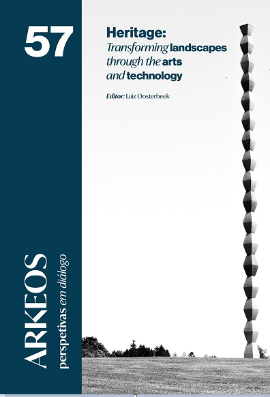L’agir patrimonial comme processus de résilience: un mythe et ses limites » (“Heritage action as a process of resilience: a myth and its limits)Heritage: Transforming landscapes through the arts and technology (ed. Luiz Oosterbeek), ARKEOS, vol. 57, 2024, p.17-52. Proceddings of the APHELEIA seminar, UNESCO-IPT Chair in Humanities and Cultural Integrated Landscape Management, Maçao, 2022, Portugal.
The most noteworthy contemporary fact, which has aroused the interest of social scientists, has been the steady rise of heritage as a social and identity issue, a factor in economic and territorial development, and a point of geopolitical crystallisation. What we are now witnessing is a gradual expansion of heritage to include natural goods and intangible goods in addition to “cultural” goods. At the same time, heritage has been accredited with a new function: that of “resilience”. Emerging at the same time as the development of the ethics of “care” and the advent of the “victim” in history in the 1970s, the notion of “resilience” has gradually pervaded the human and social sciences. Recently, it has incorporated the discourse on heritage and its supposed virtues. Widely-held opinion and cultural institutions (such as UNESCO) willingly provide the heritage approach with potential for consolation, reconciliation, and “resynchronisation”. Today, “dominated” memories see it as a source of reparation, both in terms of memory and material terms. It inspires social and political actors in territories that have been the victims of brutal change. After a disruptive event, heritage action would make it possible to restore ties to heal and prevent the worst, ward off suffering or loss, and finally, resist the fatality of history in order to face the future with greater success. Behind this consensus that is forming around the requirement of resilience as a new imperative is the promotion of protection as an ultimate, almost sacred, value. We have come to consider cultural protection a human right like Pope Francis, who, in his general address on November 30, 2016, welcomed the conference on endangered heritage (initiated by France and the United Arab Emirates) based on his belief that “the protection of cultural wealth constitutes an essential dimension of the defence of the human being”. With the growth in environmental awareness, the “rights” of nature (landscapes, fauna, flora) play an ever more active role in this process of reconstitution and repair. Even the “rewilding” of forests, for example, has been equated with a heritage “revolution”: “Where we thought only of destroying, we are beginning to rebuild.” Reconstruction involves more than just building. We are witnessing the promotion of a secularised culture of the relic and of the sanctuary that must lead man to be reconciled with “nature”. It is this myth of resilience as a force for reconciliation and protection that we wish to examine.
You can download the article here: «R Belot_L’agir patrimonial comme processus de résilience un mythe et ses limites.pdf»


 Université Jean Monnet
Université Jean Monnet